“I just moved out and I’m a beginner at cooking, I cooked a salmon filet with skin in the pan i cooked both sides pretty well to be honest I surprised my self, but I didn’t check the internal temp. The fish falls apart pretty easily with a fork and it’s not rubbery or anything, I’m just worried if it’s undercooked and I could get sick if I eat it at the moment. Thank you!”
– That1guy__ on Reddit
If you are a beginner at cooking, you must be confused about the line between fully cooked salmon and undercooked salmon. Even the most experienced cooks have overcooked this pink fish at some point. But once you make that mistake, you don’t want to repeat it, and our aim here is to help you meet that goal.
Below, we explain four easy ways to tell if salmon is cooked.
Jump To:
Check the temperature: Salmon is cooked at what temp?
What is the perfect salmon internal temp for flaky and tender meat?
The USDA recommends cooking salmon to a safe internal temperature of 145°F (63°C). However, at 145°F, salmon can become overcooked, dry, and tough. After extensive testing, our chefs and taste testers agree that the best results come from cooking salmon to medium-rare, which is 120° to 125°F (49° to 52°C). At this temperature, the salmon remains firm yet silky. Is it safe to eat salmon at 120°F? Because killing pathogens in food requires both temperature and time, you can hold a 1-inch thick salmon fillet at 131°F for 5 hours to ensure it is safe to eat.
To accurately check the internal temperature of the salmon, using an instant-read meat thermometer is crucial.
Typhur InstaProbe instant-read meat thermometer:
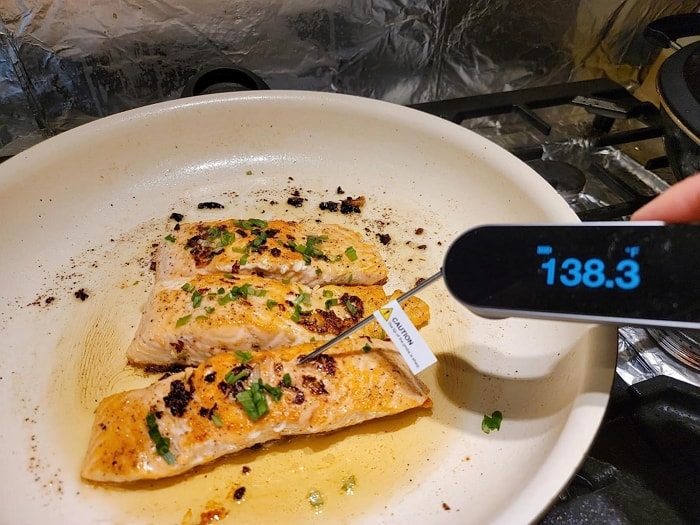
- It is the fastest meat thermometer on the market, with a lightning 0.5 seconds response time.
- Accurate to ±0.5℉, with 7 different temperature points calibration (certified by NIST), for reliable reading in any cooking situation you can imagine.
- It’s also waterproof with built-in magnets, so you can wash it in the sink and stick it onto your fridge anytime you want.
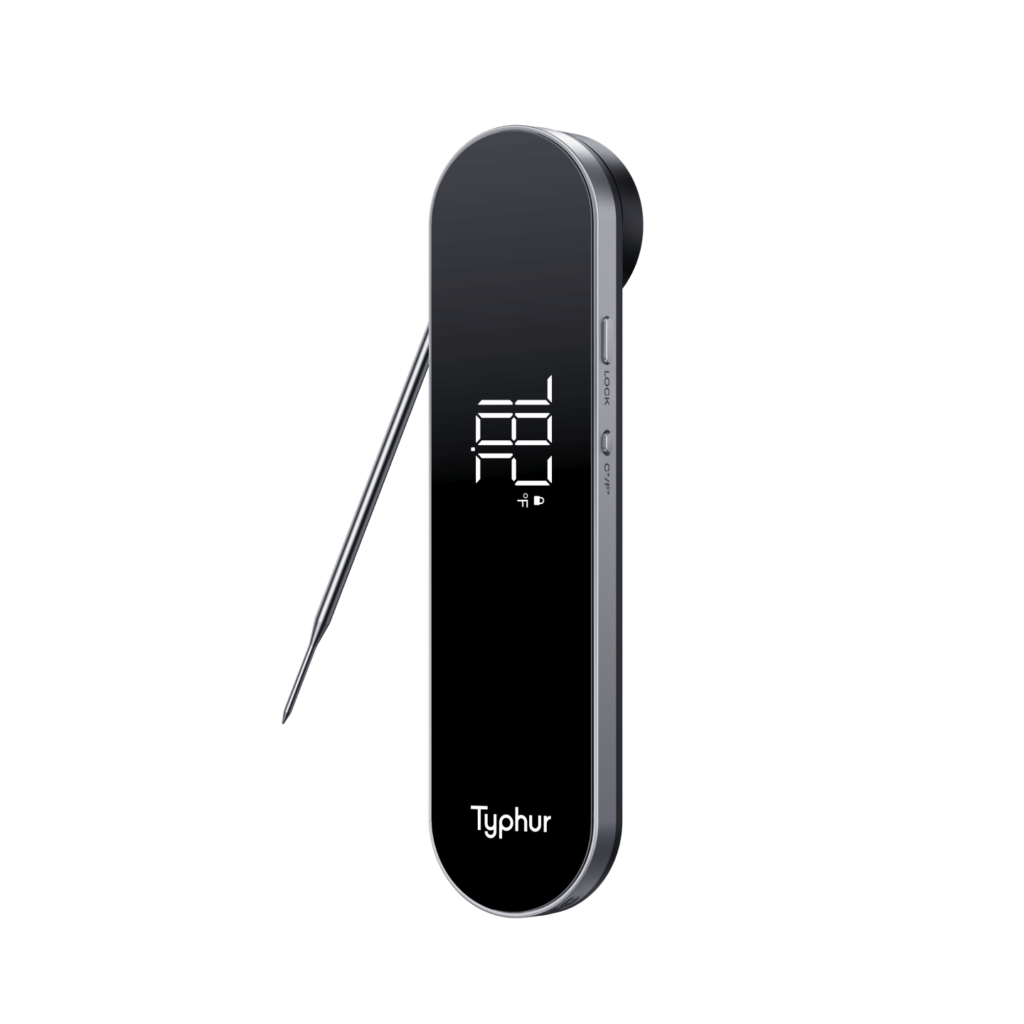
Instant Read Meat Thermometer
How to Check the Salmon Internal Temperature
Step 1. Insert the probe of the Typhur InstaProbe into the thickest part of the salmon fillet, making sure not to touch the bone. If the salmon has skin on, insert the probe through the skin, into the flesh.
Step 2. Wait just 0.5 seconds, and the Typhur InstaProbe will give you the exact temperature.
Step 3. Once the salmon has reached the recommended internal temperature, remove it from the heat and let it rest for a few minutes.
Want to know more about Typhur InstaProbe? Please have a look at this video. You will be surprised!
Note:
As with checking the salmon’s doneness with the flakiness test, when you’re using an instant read thermometer it’s also recommended to remove the salmon from the heat when it’s a few degrees below the desired internal temperature, and then allow it to rest for a few minutes to finish cooking.
Check the flakiness: Is it flaky?
How to know when salmon is done without using a meat thermometer? Expert cooks can tell if a salmon is done by its flakiness. Salmon should be flaky when it’s fully cooked. Under high heat, the flesh of the fish will become firmer and the natural oils in the fish will begin to separate from the flesh, resulting in a flaky texture.
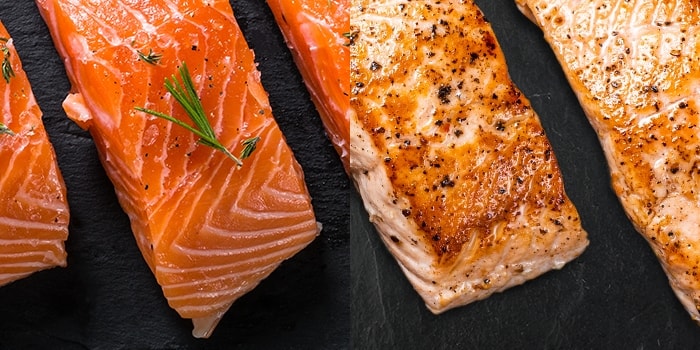
To check if your salmon is flaky, use a fork to gently pull the flesh apart.
- If the flesh easily separates into large, firm flakes, then the salmon is fully cooked.
- If the flesh still looks translucent and doesn’t flake easily, then it means that more time is needed.
It’s important to note that overcooking salmon can cause the flesh to become dry and tough, so it’s best to remove the salmon from the heat, slightly before it’s fully cooked and allow it to rest for a few minutes to finish cooking. It’s also important to keep in mind that thicker cuts of salmon require a longer cooking time.
Check the color: What color is cooked salmon?
What does cooked salmon look like? Cooked salmon should be opaque and have a light pink or coral color, depending on the type of salmon. For example, wild salmon tends to have a brighter, more vibrant color compared to farmed salmon. But no matter what type of salmon you’re cooking, the flesh of the salmon should be evenly colored and not have any translucent or raw-looking parts. Overcooked salmon may appear dry, white, or faded in color, and may have a tough texture.
While color can be a helpful visual indicator of doneness, it’s not always reliable. To ensure that salmon is fully cooked and safe to eat, it’s best to use a meat thermometer to check the internal temperature.
Check the time: How long does it take to cook salmon?
The cooking time for salmon depends on the thickness of the fillet you use and how you are cooking it. Salmon should be cooked for about 10 minutes per inch of thickness when cooked at 375°F (190°C).
Cooking times can change based on the specific oven, grill, or stove being used, as well as the thickness and starting temperature of the salmon. To ensure that the salmon is fully cooked, it’s best to use a meat thermometer to check the internal temperature.
FAQs about cooked salmon
Undercooked salmon will appear raw or slightly translucent in the center. The flesh will still be soft and won’t flake apart easily. If the salmon has a glossy, shiny appearance and resists breaking apart, then it’s undercooked.
It is not recommended to eat undercooked or raw salmon. Consuming undercooked or raw salmon can put you at risk of foodborne illness, specifically an infection with the parasite known as Anisakis. Symptoms of Anisakis infection can include nausea, vomiting, diarrhea, abdominal pain, and in rare cases, an allergic reaction.
Yes, it is okay for salmon to be pink in the middle. The pink color of cooked salmon comes from astaxanthin, a natural pigment that is found in salmon and other seafood.
Astaxanthin does not break down at cooking temperatures and will remain pink even when salmon is fully cooked (it’s responsible for the red color you get when you cook shrimp and lobster).
Temperature Guide for Different Salmon Recipes

Oven Baked Salmon: Bake at 400℉ (204℃) until the internal temperature reaches 125-130°F (51-54°C) for medium.
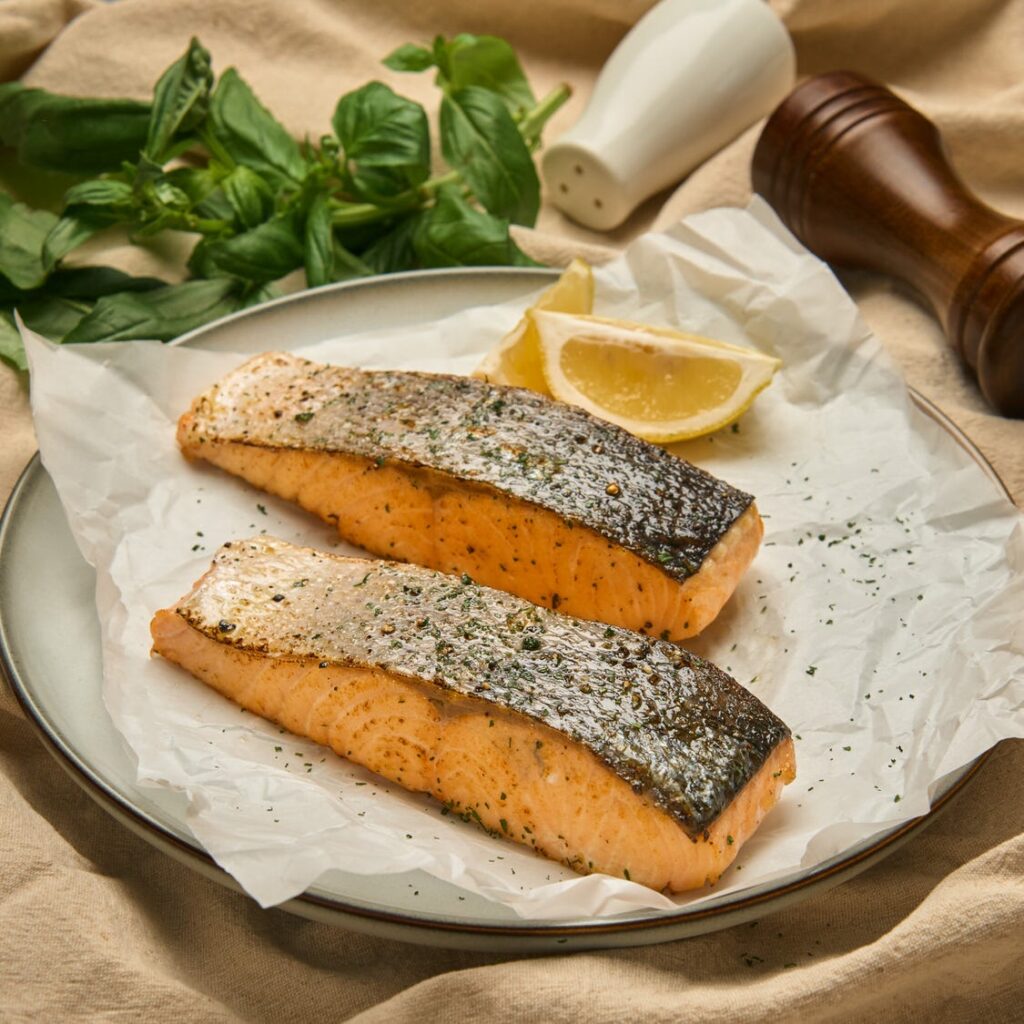
Air Fryer Salmon Recipe: Cook salmon at 400°F/205°C for 5 minutes. Air fryer salmon boasts a delightfully crispy exterior paired with a juicy, tender inside.

Smoked Salmon: Smoke the salmon at 200°F (93°C) for about 45 minutes, until the internal temperature reaches 133℉/56℃ for medium well doneness.
Conclusion
How to know if salmon is cooked? Use the 4 methods mentioned above!
Remember, the temperature is the main factor in whether your salmon comes out how you want. So, make sure to cook salmon to the appropriate internal temperature, it is recommended to use the best instant-read meat thermometer, like the Typhur InstaProbe.



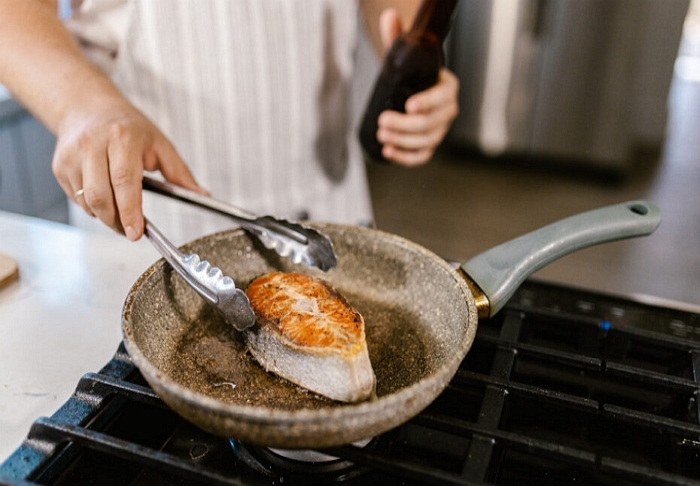
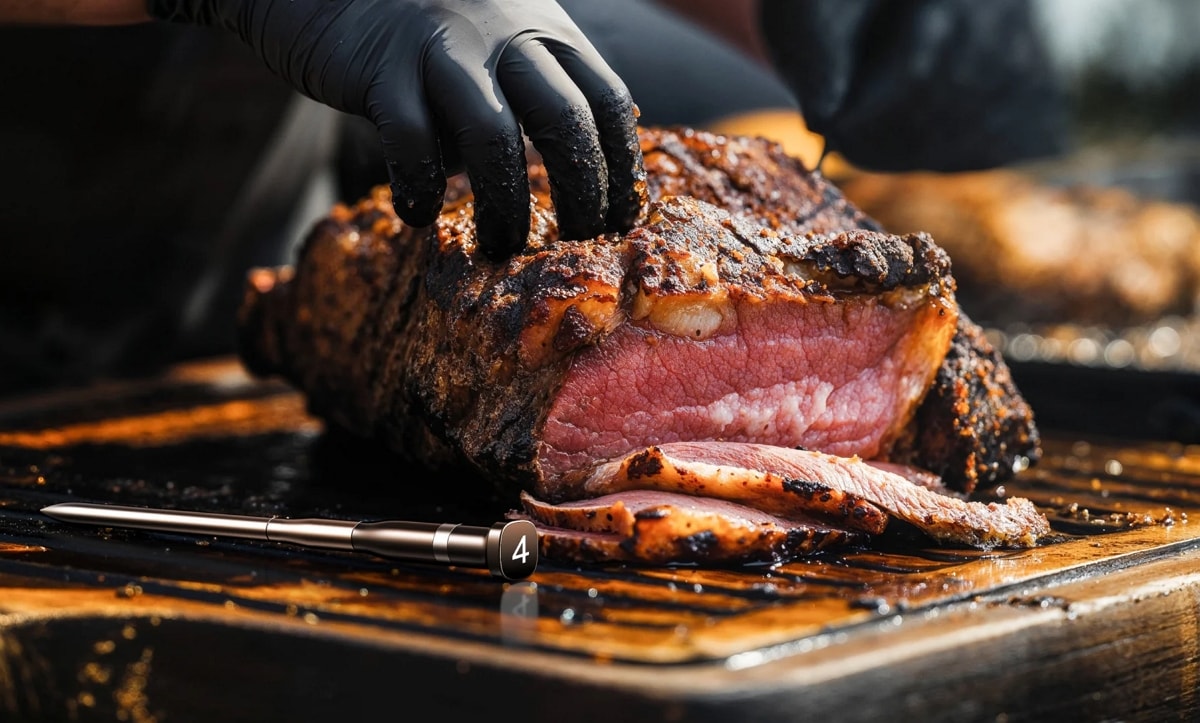
I’ll try the thermometer